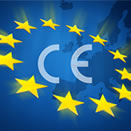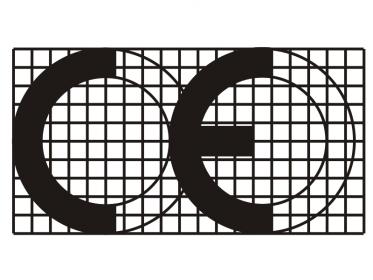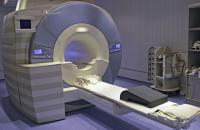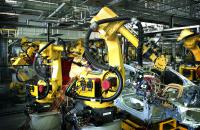
CE marking is a prerequisite for placing equipment on the market in the European Union.
Affixed to a product, the CE marking attests that it complies with all the directives applicable to it, i.e. that it complies with the essential requirements laid down by these same "new approach" directives.
The new approach is a regulatory modality implemented by the European Commission to approximate Member States' legislation, particularly for electrical and electronic products.
There are three objectives of this regulation:
The New Approach Directives leave manufacturers the choice of the type-approval procedure used to certify the conformity of their products, in particular that of using harmonised European standards. They thus differ from the old directives which imposed strict and precise technical devices on manufacturers.
See the blue guide published in the OJEU in July 2016 ( pdf file - 2.4 MB) on the implementation of the directives drawn up on the basis of the provisions of the new approach and the global approach.
As an equipment testing specialist and a Notified Body, Emitech offers you the benefits of its technical know-how and expertise in demonstrating your conformity for the purpose of CE Marking

The main directives applying to electrical and electronic equipment:
Other directives and regulations may also apply, such as Directives 2009/48/EC on the safety of toys, 2006/42/EC on machinery, regulation MD 2017/745 (to replace directive 93/42/EEC amended by Directive 2007/47/EC) on medical devices, etc. Emitech may then intervene within the field of competence of its laboratories to complete your technical documentation within the framework provided by these directives to justify your compliance with the essential requirements defined therein.
Depending on the category of a product, one or more assessment procedures are possible among the eight modules currently defined in the annexes to the Directives depending on the level of implementation by the manufacturer of a quality management system.
 Internal production control
Internal production control
There are two main categories of conformity assessment procedure:
A manufacturer concerned by self-certification can always decide to request a third body to carry out the conformity control.
Emitech is a Notified Body under number NB 0536 (see Nando).
Emitech Group laboratories support you in the areas of product safety, electromagnetic compatibility (EMC), radiofrequency requirements and human exposure to electromagnetic fields to carry out the tests enabling you to draw up your EU declaration of conformity.
|
In this module, also called 'self-certification', the manufacturer certifies himself that his product complies with the essential health and safety requirements and keeps a supporting file available to the national supervisory authorities. The manufacturer shall thus draw up an EU declaration of conformity attesting conformity of the product with the essential requirements laid down in the Directive(s) applicable to the product. This module does not require the intervention of a notified body. This simplified procedure is generally used when products are manufactured in accordance with harmonised European standards or when products do not present particular risks. This procedure requires reference to harmonised European standards and the technical and human resources necessary to carry out the tests required to certify compliance. |
Harmonised standards are published in the Official Journal of the European Union (OJEU). Our teams work daily on these documents and guide you in choosing the applicable standards for your products according to their use characteristics and the directives applicable to them. It is important to note that the list of harmonised standards evolves over time and that your EU declarations of conformity must incorporate these changes throughout their placing on the market in the European Union.
For your products also intended to be placed on the market outside the European Union, our services are able to inform you about the required approval procedures and additional tests that may be required (grouping test campaigns by defining a global envelope of tests to be performed can have an impact in terms of cost reduction).
CE marking facilitates economic trade between countries by harmonising previously different regulations.
In France, market surveillance is mainly carried out by agents of the Direction Générale de la Concurrence, de la Consommation et de la Répression des Fraudes (DGCCRF)) and, for products imported from countries outside the European Union, by agents of the Direction Générale des Douanes et Droits Indirects (DGDDI). Indirect players also participate in compliance with CE marking (major chains, integrators of sub-assemblies, competitors) so as not to bear the negative impact they would have to suffer.

Please do not hesitate to contact us to check the impact that the most recent changes in the regulatory texts may have.
By affixing the CE marking to a product, the manufacturer declares on his sole responsibility that the product is in conformity with the essential requirements of the applicable Union harmonisation legislation providing for its affixing and that the relevant conformity assessment procedures have been fulfilled. Products bearing the CE marking are presumed to be in compliance with the applicable Union harmonisation legislation and hence benefit from free circulation in the European Market.
No. The CE marking only signals that all essential requirements have been fulfilled when the product was manufactured. The CE marking is not a mark of origin, as it does not indicate that the product was manufactured in the European Union. Consequently, a product affixed with the CE marking may have been produced anywhere in the world.
No. In fact, the assessment of the conformity of the products with the legislative requirements applying to them is the sole responsibility of the manufacturer. The manufacturer affixes the CE marking and drafts the EU declaration of conformity. Only products which are regarded as presenting a high risk to the public interest, e.g. pressure vessels, lifts and certain machine tools, require conformity assessment by a third party, i.e. a notified body.
Yes, the CE marking is always affixed by the manufacturer himself or his authorised representative after the necessary conformity assessment procedure has been performed. This means that, before being affixed with the CE marking and being placed on the market, the product must be subject to the conformity assessment procedure provided for in one or more of the applicable Union harmonisation acts. The latter establish whether the conformity assessment may be performed by the manufacturer him- self or if the intervention of a third party (the notified body) is required.
The marking shall be affixed either to the product or to the product's data plate. When that is not possible due to the nature of the product, the CE marking shall be affixed to the packaging and/or to any accompanying documents.
The EU declaration of conformity (EU DoC) is a document in which the manufacturer, or his authorised representative within the European Economic Area (EEA), indicates that the product meets all the necessary requirements of the Union harmonisation legislation applicable to the specific product. The EU DoC shall also contain the name and address of the manufacturer along with information about the product, such as the brand and serial number. The EU DoC must be signed by an individual working for the manufacturer or his authorised representative, and the employee's function shall also be indicated. Whether a Notified Body has been involved or not, the manufacturer must draw up and sign the EE declaration of conformity.
Yes, CE marking is mandatory. However, only the products that are covered by the scope of one or more of the Union harmonisation acts providing for CE marking shall be affixed with it in order to be placed on the Union market. Examples of products that fall under Union harmonisation acts providing for CE marking are toys, electrical products, machinery, personal protective equipment and lifts. Products that are not covered by CE marking legislation shall not bear the CE marking. 26.7.2016 C 272/147 Official Journal of the European Union EN
Information the products that are CE marked and the Union harmonisation legislation providing for CE Marking under https://single-market-economy.ec.europa.eu/single-market/ce-marking_en
The CE marking is the only marking that indicates conformity to all the essential requirements of the Union harmonisation legislation that provide for its affixing. A product may bear additional markings provided that they do not have the same meaning as the CE marking, that they are not liable to cause confusion with the CE marking and that they do not impair the legibility and visibility of the CE marking. In this respect, other markings may be used only if they contribute to the improvement of consumer protection and are not covered by harmonisation legislation of the European Union.
In order to guarantee the impartiality of market surveillance operations, the supervision of the CE marking is the responsibility of public authorities in the Member States in cooperation with the European Commission.
The procedures, measures and sanctions that apply to counterfeiting of the CE marking are laid down in Member State's national administrative and penal law. Depending on the seriousness of the crime, economic operators may be liable to a fine and, in some circumstances, imprisonment. However, if the product is not regarded as an imminent safety risk, the manufacturer may be given a second opportunity to ensure that the product is in conformity with the applicable legislation before being obliged to take the product off the market.
While manufacturers are responsible for ensuring product compliance and affixing the CE marking, importers and distributors also play an important role in making sure that only products complying with legislation and bearing the CE marking are placed on the market. Not only does this help to reinforce the EU's health, safety and environmental protection requirements, it also supports fair competition with all players being held accountable to the same rules.
When products are produced in third countries and the manufacturer is not represented in the EEA, importers must make sure that the products placed by them on the market comply with the applicable requirements and do not present a risk to the European public. The importer must verify that the manufacturer outside the EU has undertaken the necessary steps and that the documentation is available upon request.
Thus, importers must have an overall knowledge of the respective Union harmonisation acts and are obliged to support national authorities should problems arise. Importers should have a written assurance from the manufacturer that they will have access to the necessary documentation — such as the EU declaration of conformity and the technical documentation — and be able to provide it to national authorities, if requested. Importers should also make sure that contact with the manufacturer can always be established.
Further along in the supply chain, distributors play an important role in ensuring that only compliant products are on the market and must act with due care to ensure that their handling of the product does not adversely affect its compliance. The distributor must also have a basic knowledge of the legal requirements — including which products must bear the CE marking and the ac- companying documentation — and should be able to identify products that are clearly not in compliance.
Distributors must be able to demonstrate to national authorities that they have acted with due care and have affirmation from the manufacturer or the importer that the necessary measures have been taken. Furthermore, a distributor must be able to assist the national authority in its efforts to receive the required documentation.
If the importer or distributor markets the products under his own name, he then takes over the manufacturer's responsibilities. In this case, he must have sufficient information on the design and production of the product, as he will be assuming the legal responsibility when affixing the CE marking.
Information about CE marking, the products that are CE marked, the Union harmonisation legislation providing for CE Marking and the steps to follow under http://ec.europa.eu/growth/single-market/ce-marking/index_en.htm Economic operators may contact the Enterprise Europe Network under http://een.ec.europa.eu/









Emitech Group - Legal information